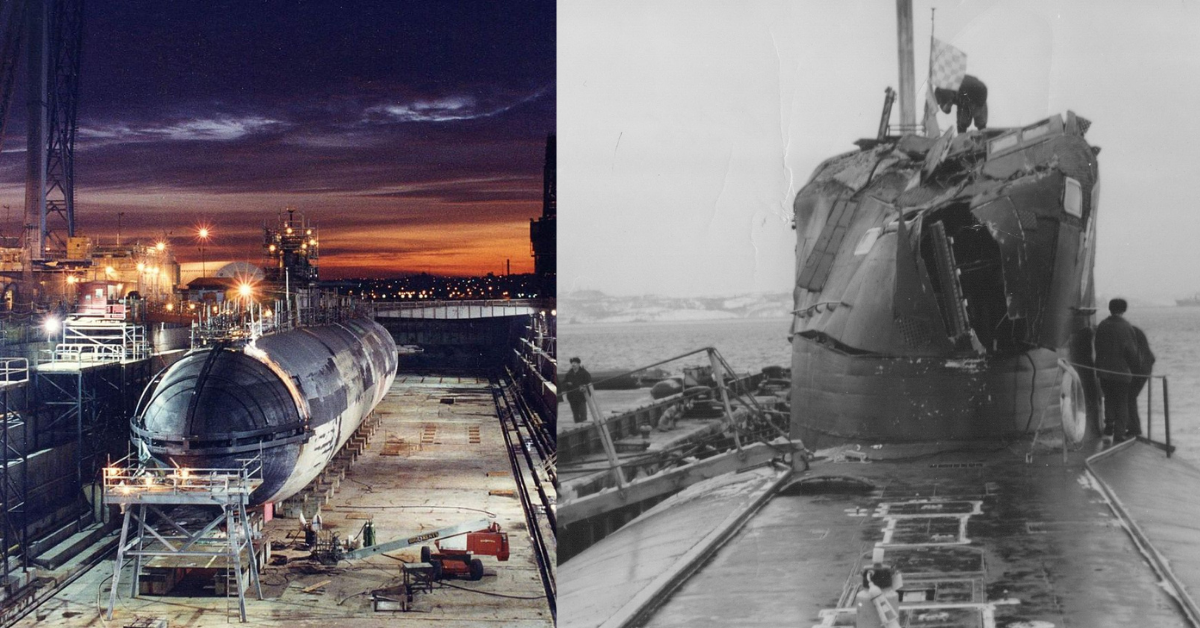Although the Cold War ‘ended’ with the fall of the Soviet Union in 1991, the tensions built up over the previous 45 years did not simply fade away. The US in particular was very interested in the circumstances the former Soviet forces now found themselves in. The US Navy was tasked with gathering some of this information. The task would result in an embarrassing collision between two nations’ nuclear submarines.
The Cold War had ended, but the spying had not
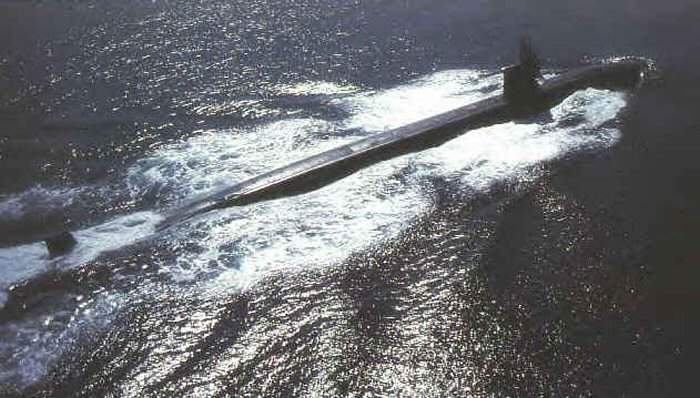
Russia was in political and financial chaos after the Soviet Union fell, but that did not make their military, especially their powerful Navy, any less deadly. The US Navy began studying the movement and communications of the Russian Navy in their ports, by listening for vessels and tapping into Russian communication cables on the seabed. These operations were known as “Operation Holy Stone.”
In February of 1992, a US Los Angeles-class nuclear attack submarine, the USS Baton Rouge, was near the Russian port of Severomorsk as part of these intelligence-gathering missions. Officially, the US submarine was in this location collecting or placing listening apparatus on the seabed.
The crew continued with their mission in the belief they were completely alone and undetected.
11 February 1992
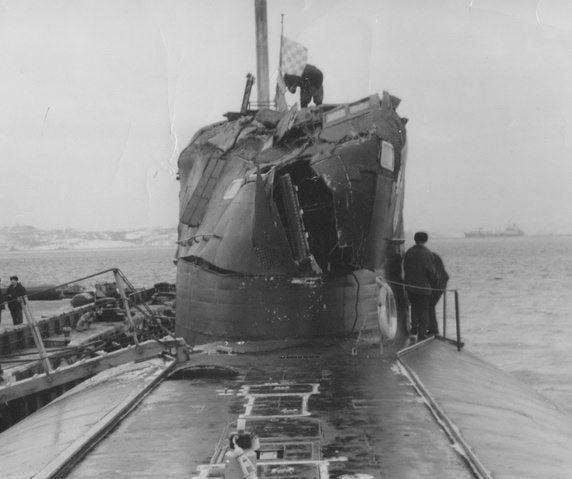
Around 12 miles from the shore, in an area the US considered international waters, the USS Baton Rouge unexpectedly collided with a Russian submarine, rocking the crew inside. The submarine was the B-276 Kostroma, a 9,000-ton Sierra-class nuclear-powered vessel.
The Kostroma hit Baton Rouge at 8 mph as it was trying to surface. That speed seems slow but carried significant force due to the enormous weight of the submarine. Both submarines suffered extensive damage from the accident but both were able to return to their respective ports.
The Russian submarine sustained damage to its conning tower (pictured above) because of its upward motion. The American submarine received heavy scratches and a torn ballast tank. Fortunately, no one was harmed by the incident, but the situation for Baton Rouge was dangerous as it only had a single hull, which if ruptured would allow water to rush in.
Political reaction
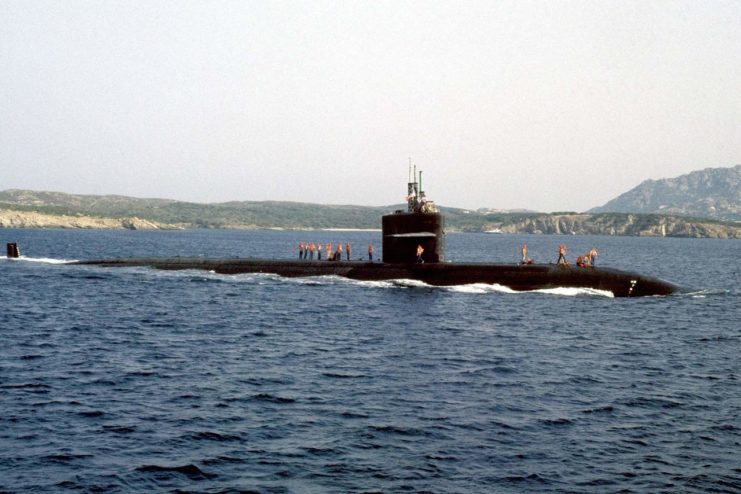
Naturally, the event was a major political disaster for the US, which was exposed for still keeping tabs on Russian activity. While the location of the collision was considered international waters by the US, the Russians disagreed and claimed the US had illegally entered their waters.
The US claim that the Baton Rouge was only in the area to manage listening devices wasn’t accepted by the Russians, who believed the two submarines knew of each others’ presence and were playing a game of cat-and-mouse. Further investigations by analysts have supported this idea too, as it seems unlikely that Baton Rouge would have come this close without being detected by Russian anti-submarine systems.
Still, the collision itself was almost certainly an accident. In fact, before returning to their respective ports, the USS Baton Rouge circled around to the Russian sub to see if they needed assistance following the accidental collision.
The event prompted the meeting of US Secretary of State James Baker and Russian president Boris Yeltsin to discuss the situation.
What happened to the submarines?
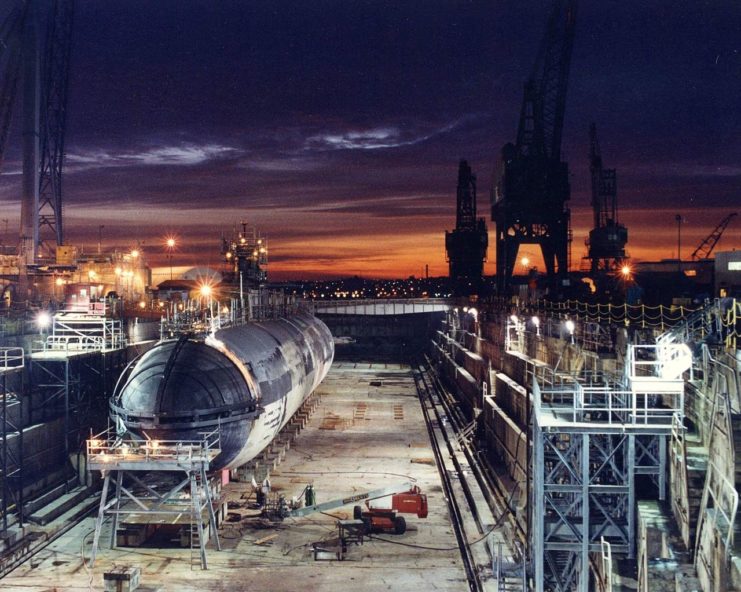
#270546 / Darryl Baker)
Once Baton Rouge was back in home waters, the full extent of the damage was assessed, and the decision was made to scrap the vessel. The submarine was due to be refueled which is expensive and long process for nuclear-powered vessels. This, combined with the costs of repairing her damaged hull meant it was uneconomic to keep the submarine in service. She was struck from service in early 1993 and scrapped later in the year at the Puget Sound Naval Shipyard in Bremerton, Washington.
More From Us: Whiskey On The Rocks – When Sweden Woke Up To Find a Russian Submarine Stuck On a Rock
The Russian submarine did not suffer from the same fate and enjoyed a long career after the event. She was repaired at the Nerpa shipyards in Snezhnogorsk by June 29, 1992. Kostroma received a major refit in 2005, before again returning to service.
One of the most recently known upgrades to the Russian submarine was the addition of an updated Kizhuch sonar complex.
Today, she is in reserve and bears a number “1” kill marker on her conning tower, for her part in Baton Rouge’s accidental defeat.
